The Tokyo Marathon is a top-notch event that attracts a large number of runners and spectators every year.
Its flat and fast course allows runners to achieve great times, often setting personal bests (PB) as they navigate through the streets of Tokyo.
Right from the start, the course heads downhill, and for the rest of the way, there are no major hills to overcome.
Whether you’re an experienced marathon runner or a beginner taking on a new challenge, this Tokyo Marathon Route Guide is a valuable resource for any runner.
This article will cover everything you need to know about the Tokyo Marathon course and provide a quick overview of how to get ready for race day.
Let’s get started…
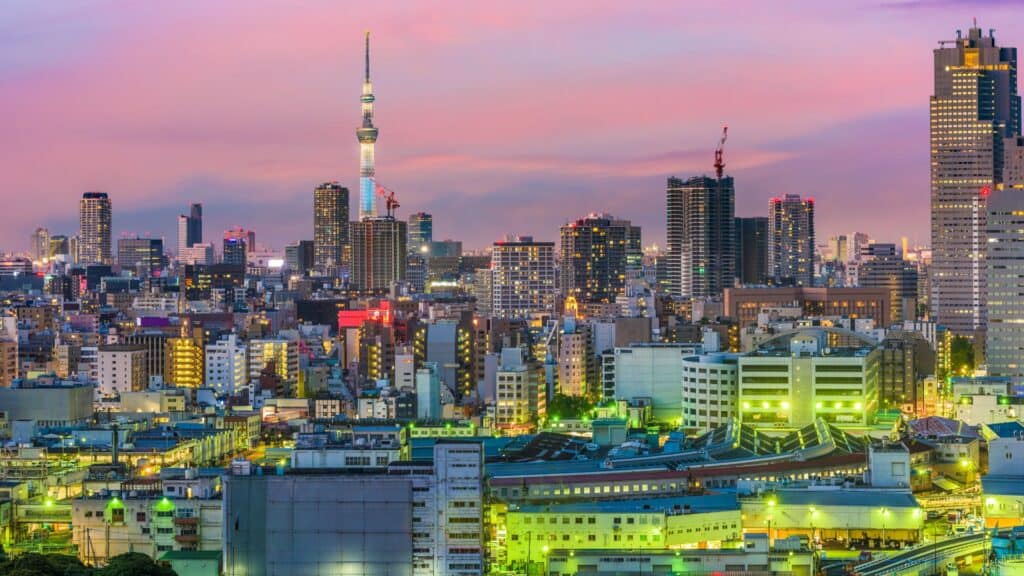
Tokyo Marathon Course Overview
The race begins at the Tokyo Metropolitan Government Building, a notable landmark in Shinjuku. You will start your journey here, preparing for the long-distance challenge ahead.
From the government building, the course heads towards Suidobashi, an area known for the Tokyo Dome, and the adjacent amusement complex, Tokyo Dome City.
Once you reach Suidobashi and make your way across the rail, be extra cautious on this part of the course.
When you get to Sudacho, you’ll begin your first “out and back” section. After covering about 10 kilometers (that’s around 6.2 miles), you’ll turn around at Ueno-hirokoji.
Ueno-hirokoji is near Ueno Park, which happens to be one of Tokyo’s most famous parks. Ueno Park is notable for its museums, galleries, and zoo, making it a prominent cultural and recreational hub in the city.
The first out-and-back portion concludes when you reach Sudacho again.
Continuing the marathon, participants will pass through Kanda, an area famous for its traditional style and numerous old bookstores. Kanda is also known for its rich history and vibrant atmosphere.
The route then leads to Nihombashi, an iconic bridge in Tokyo that has been a crucial point for trade and commerce throughout history. This area is well known for its traditional significance and its modern commercial developments.
This is also where the 10.7km (6.6 miles) run finish line is located.
Remember this bridge because the next time you see it, you’ll be heading into the final 10 kilometers (6.6 miles) of the race.
This juncture is regarded as the starting point of your second out-and-back section, which has 2-3 additional out-and-back segments within itself before you circle back to Nihombashi.
You will proceed towards Asakusa, starting your third out-and-back segment at Kuramae 1-Chome. You’ll turn back at Kaminarimon Gate, the outer gate of Senso-ji Temple, one of Tokyo’s oldest and most significant Buddhist temples.
As you progress along the route, you’ll come across Ryogoku, where you’ll hit your halfway point on this long stretch. Ryogoku is famous for its association with sumo wrestling, hosting the Ryogoku Kokugikan, the national sumo arena.
Moving forward, the route heads to Monzen-nakacho, an area that blends traditional Japanese culture with modern attractions. The Tomioka Hachimangu Shrine, known for its vibrant festivals, is situated in this district.
Upon catching sight of the shrine, you’ll turn around and head back to Kuramae 1-Chome, marking the end of this particular out-and-back section.
As you continue, you’ll reach the 30km (18.6 miles) milestone when passing Hamacho-Nakanohashi on your way back to Nihombashi.
The course then takes runners through Ginza, a prestigious shopping district renowned for its luxury boutiques, high-end department stores, and upscale dining options.
In Ginza, you’ll cross the rail once more as you approach the 35 km point (21.7 miles). The start of your last out-and-back segment will follow shortly after crossing the rail.
Your return will take place in Daiichi Keihin (after Tamachi) as you set your sights on the final stretch of the race, spanning 4.5 km (2.8 miles).
Hibiya is famed for its abundant greenery, notably Hibiya Park, one of Japan’s earliest Western-style parks.
Finally, the race concludes at Tokyo Station or Gyoko-Dori Ave, completing the marathon journey through various landmarks, cultural hubs, and dynamic urban landscapes of Tokyo.
Tokyo Marathon Course Map
Tokyo Marathon Elevation Chart
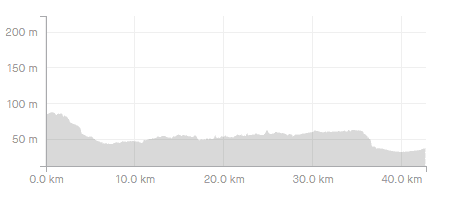
What Are The Cut-off Times Off At The Tokyo Marathon?
Here are the cut-off times for the Tokyo Marathon:
Marathon:
- Marathon: 7 hours (9:10 a.m. – Start, 4:10 p.m. – Finish)
- Wheelchair: 2 hours and 10 minutes (9:05 a.m. – Start, 11:15 a.m. – Finish)
10.7km (6.6 miles) Race:
- 10.7km (6.6 miles) Race: 2 hours (9:10 a.m. – Start, 11:10 a.m. – Finish)
- Wheelchair: 40 minutes (9:05 a.m. – Start, 9:45 a.m. – Finish)
Please note that runners who do not pass through the checkpoint before the cut-off time will be removed from the race. Additionally, participants who fall significantly behind the cut-off pace may be asked to leave the course at any time.
Here are the provisional cut-off times and their respective locations.
| Cut-off Checkpoint | Location | Closure Time | |
| Marathon | Wheelchair | ||
| 4.9km (3 miles) | Ichigaya-MitsukeIntersection | 10:25 | 9:25 |
| 11.1 km (6.9 miles) | Soto-Kanda 5 -Chome Intersection | 11:10 | 9:45 |
| 15.4 km (9.6 miles) | HisamatsuchoIntersection | 11:55 | |
| 20.9 km (13 miles) | Midori 1-ChomeIntersection | 12:25 | 10:10 |
| 24.7 km (15.3 miles) | Fukagawa 1-ChomeIntersection | 13:20 | |
| 29.2 km (18.1 miles) | AsakusabashiIntersection | 14:00 | 10:40 |
| 33.5 km (20.8 miles) | SukiyabashiIntersection | 14:35 | |
| 37.8 km (23.5 miles) | Shiba 5-Chome Intersection | 15:15 | |
| Finish Line | Tokyo Station/Gyoko Ave. | 16:10 | 11:15 |
Grab your Tokyo Marathon Training Plan Here!
Medical Assistance On The Course
Medical assistance will be available along the route to attend to any injuries or illnesses that occur during the race. In certain instances, financial assistance may be provided for injuries sustained during the event.
Please note that nonprescription medications such as digestive aids, cold remedies, analgesic patches, and pain relief topical sprays will not be accessible at the Medical Stations.
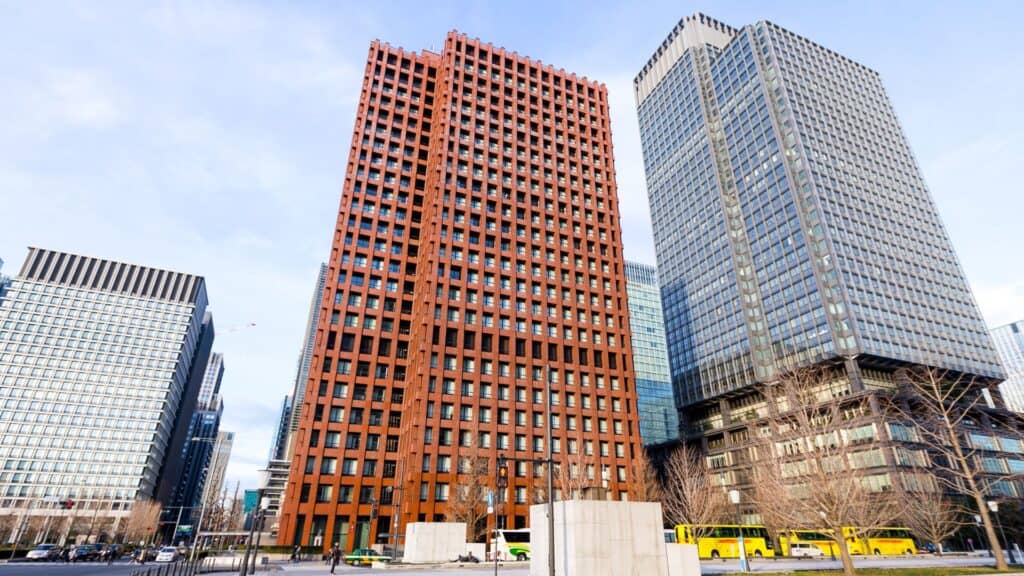
Toilets Along The Tokyo Marathon Route
Compared to several other marathons, the availability of portable toilets at the Tokyo Marathon has been notably limited, leading to long queues.
This issue is prominent not only at the start before accessing the corrals but also along the race course, particularly in the initial stages.
Some portable toilets are placed off the designated course, requiring you to follow signs indicating the detour.
According to feedback from numerous runners, shorter or no lines were found well past the halfway point from the starting line.
Be aware that there’s a mix of Western and Japanese-style toilets at the starting line and along the race route, so plan accordingly.”
Fortunately, several 7-11 establishments are also positioned along the course.
A BIG NO: No Littering Anywhere On The Course
There is a strict no-littering policy anywhere along the Tokyo Marathon course.
Japan is known for its cleanliness, and this standard is upheld during the marathon. Volunteers will be present, holding trash bags for you to dispose of gel packets and other waste.
During large races, the back-of-the-pack runners face slipping hazards due to discarded paper cups and other items like orange peels.
Make sure not to discard your empty gel packets on the ground.
Huge bins are strategically placed at every water station, and every runner stopping for water makes an effort to dispose of their cup in the trash bins.”
The Long Walk After The Race
After completing the marathon, be prepared for a significant trek from the finish line to access water, collect your medal, and reunite with your family and friends.
The distance between these points can be quite extensive, and you might find yourself getting considerably colder after the race. To stay warm and comfortable, consider stashing a coat in the bag drop to put on post-race.
Additionally, it’s wise to have a clear plan in place for meeting up with your spectators, as the phone signals in the area can be unreliable at times. Having a designated meeting spot can help ensure a smooth post-race reunion with your loved ones.
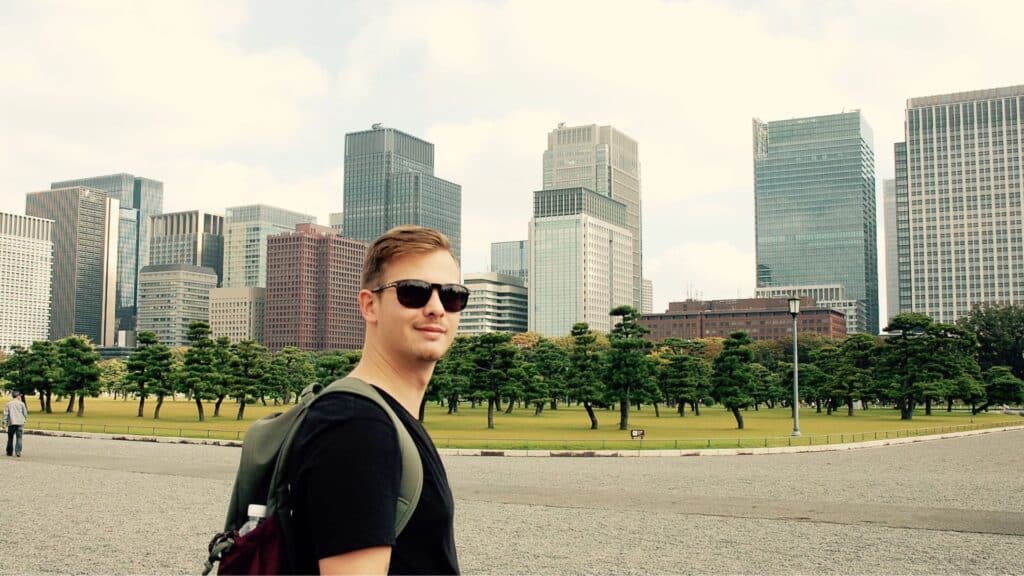
Are There Mile Markers Along The Tokyo Marathon Course?
At the Tokyo Marathon, it’s important to note that there are no mile markers along the route. The entire distance is measured solely in kilometers.
Interestingly, the only mile marker you’ll encounter is at the halfway point. If you’re accustomed to international races with both mile and kilometer markers, this might be a bit disorienting for you.
Runners who primarily work with miles may find it challenging to gauge their exact location
Spectator Spots Along The Tokyo Marathon Route
Supporting the runners at the Tokyo Marathon is a crucial aspect of the event, offering valuable encouragement for the participants as they tackle the challenging 42.2 km (26.2-mile) route through the historic city.
The marathon provides various dedicated cheering sections, some even featuring grandstand seating for extended viewing.
Here are some key spectator spots along the Tokyo Marathon route:
1. The Starting Line
Witness the excitement at the starting line and support the participants as they begin their journey through the city.
2. Yasukuni Dori
Positioned near Shinjuku Station, Yasukuni Dori buzzes with enthusiastic spectators cheering on the runners around the 3-mile (km) mark, providing an early boost to their spirits.
3. The Imperial Palace
At the 8.9 km (5.5-mile) mark, the Imperial Palace offers an excellent vantage point for both cheering and capturing memorable photos of the race.
4. Shinagawa Station
A vibrant location perfect for those relying on public transportation, the Shinagawa Station section provides a lively ambiance and a chance to catch glimpses of friends or family participating in the marathon.
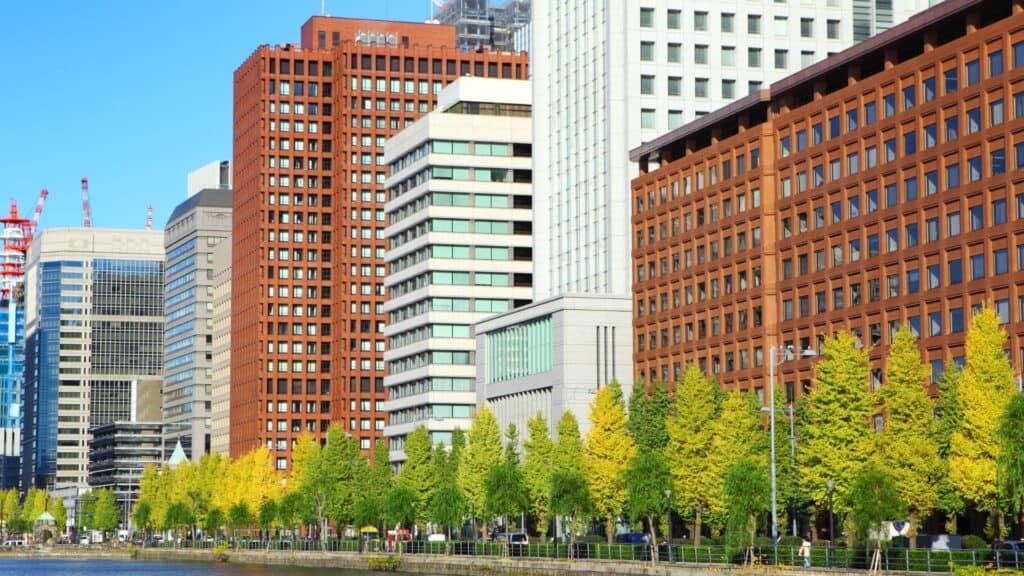
5. Ginza – The Halfway Mark
As the runners hit the 21 km (13.1-mile) mark, the Ginza district, known for its modern and stylish atmosphere, becomes a popular spot for spectators, offering a lively and energetic cheering environment.
6. Odaiba
Situated on an artificial island just outside Tokyo, Odaiba presents an exciting leg of the marathon, featuring several bridges that the runners cross. It’s an ideal location for capturing stunning race photos while cheering on the participants.
7. Tokyo Station
Serving as the race’s finish line, Tokyo Station hosts a dynamic and bustling cheering section. With music stages, refreshments, and a lively atmosphere, this spot is one of the most popular gathering points for spectators, apart from the starting line.
Top Tips For Runners At The Tokyo Marathon
Running the Tokyo Marathon can be an exhilarating experience, regardless of whether it’s your first or tenth time.
Here are some valuable tips to make the most of your Tokyo marathon:
Familiarize Yourself with the Course
Take some time to study the Tokyo Marathon course in advance. Understanding the twists and turns can give you an edge and mentally prepare you for what to expect during the race.
Pack Extra Clothing for the Start
To combat the chilly morning temperatures, consider packing some extra clothing that you can discard as you warm up during the race. Many runners opt for old clothes that they can easily discard along the route.
Set Realistic Goals
While it’s great to aim high, setting realistic goals for your Tokyo Marathon experience is crucial. Consider your training, current fitness level, and any previous marathon performances to establish achievable milestones for the race day.
Don’t Try Anything New on Race Day
Stick to the routine that has worked well during your training. Race day is not the time to experiment with new gear, food, or drinks.
Use the same shoes, clothes, and nutrition that you have practiced with during your training sessions.
Run By Gun Time
If you’re an average runner, it’s essential to keep in mind that the race operates based on gun time, which means the official start time of 9:20 a.m. is the reference point for all participants, regardless of when you personally cross the start line.
Even though you’ll receive your net time from your chip, the race timing is calculated from the gun time. This can have implications, particularly for slower runners who may start in the later corrals.
By the time you begin, you may have already lost some valuable time, making it crucial to stay mindful of the checkpoints along the route to ensure you stay on track with the race’s timing requirements.
If you’re following an official pacer, it’s worth noting that they also adhere to the gun time, so keep an eye out for the ‘I run by the gun time‘ note on your bib for additional guidance.
Soak in the Atmosphere
The Tokyo Marathon is not just about the race but also about the experience. Enjoy the vibrant atmosphere, the cheers from the crowd, and the camaraderie among fellow runners.
Take a moment to soak it all in and relish the incredible journey you’re on.
Fuel Up with Carbs
Before the race, ensure you consume a high-carb meal about 2 hours ahead to provide the necessary energy for the marathon. Opt for nutrient-rich options such as oats, bananas, pancakes, bagels, and nuts to support your overall health.
Stay Hydrated
Proper hydration is crucial to prevent muscle fatigue and cramps. Make use of the hydration stations along the route to replenish water and electrolytes as needed.
Prioritize Rest
Getting adequate sleep before the marathon is vital. Aim for at least 12 hours of good sleep in the 24 hours leading up to race day, allowing your body to recharge and prepare for the challenge ahead.
Related: How To Enter The Tokyo Marathon: Cost, How, And Who Can



Comments are closed.